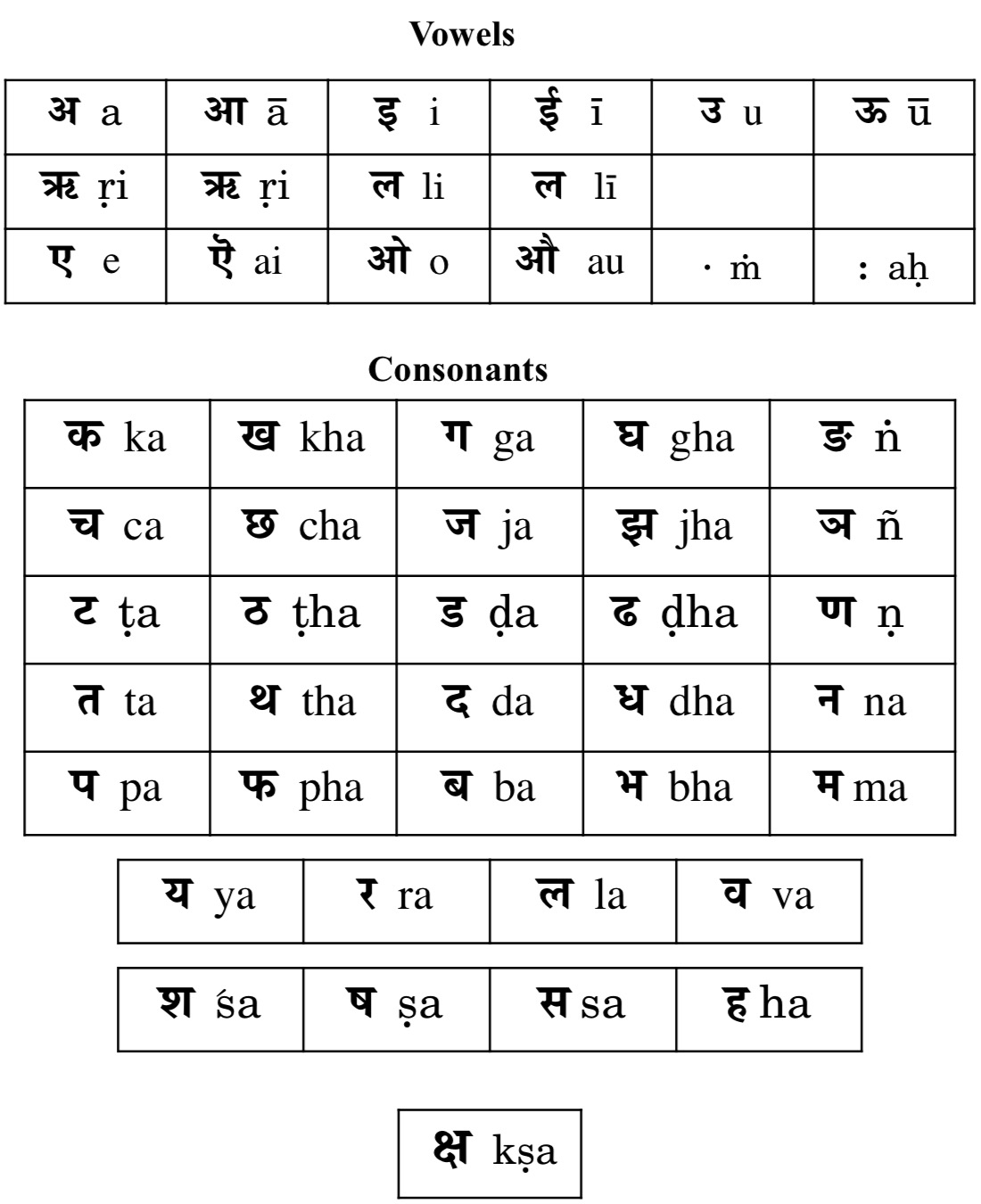Sanskrit, one of the world’s oldest languages, dates back over 3,500 years as the sacred language of the Vedas. It later evolved into Classical Sanskrit, becoming the foundation for countless philosophical, religious, and literary masterpieces.
Its influence extended far beyond the Indian subcontinent, shaping knowledge, culture, and spirituality across Asia. Even today, over 2.3 million people in South Asia speak Sanskrit, preserving its legacy.
Throughout history, Sanskrit has been written in various scripts, including Brahmi, Gupta, and Siddham. Today, it is primarily written in Devanagari, featuring 14 vowels, 42 consonants, and a unique numerical system.
Explore the timeless legacy of Sanskrit and its enduring impact on global history!
Sanskrit Vowels: Svara and Matra
In Sanskrit, vowels are known as “Svara” (स्वराः) and are categorized into two types: Independent Vowels and Dependent Vowels.
1. Independent Vowels (Svaras)
Independent vowels are standalone sounds that can be pronounced without the support of consonants. These vowels have pure, unmodified pronunciations, unobstructed by the mouth, teeth, or tongue.
2. Dependent Vowels (Matras or Anusvaras)
Dependent vowels modify the pronunciation of consonants by attaching to them. They cannot be pronounced independently and instead form a combined sound.
For example, the dependent vowel “ि” combines with the consonant “स” to form “सि”, pronounced as “si”.
Mastering these vowels is essential for understanding Sanskrit pronunciation and script.

Sanskrit, one of the world’s oldest and most structured languages, has played a significant role in shaping linguistic, cultural, and philosophical traditions for over 3,500 years. This article explores the distinct features of Sanskrit writing and some fascinating facts about its rich history and global influence.
Features of Sanskrit Writing
1. Written from Left to Right
Like many modern scripts, Sanskrit is written from left to right. This straightforward writing direction makes it accessible to those familiar with scripts like Latin, Cyrillic, and Devanagari.
2. Each Character Represents a Consonant with an Inherent Vowel
In Sanskrit, every consonant naturally carries an inherent vowel sound, typically the short vowel “a” (अ). For example, the character “क” is pronounced as “ka” unless modified by another vowel symbol.
3. Continuous Flow of Words
Sanskrit script is often written in a continuous, connected style, with characters joining together to form words. This flow enhances readability and maintains the linguistic integrity of the text.
4. Sanskrit Has Its Own Numeral System
Sanskrit features a distinct numerical system that predates and influenced modern Hindu-Arabic numerals (0-9). The concept of zero (शून्य, shūnya), which revolutionized mathematics, originated in Sanskrit texts.
5. Unique Sentence Punctuation
Instead of a period (.), Sanskrit uses a vertical right stroke (।), known as Danda (।), to mark the end of a sentence. Double Danda (॥) is used to signify the conclusion of a verse or section in classical texts.
Interesting Facts About Sanskrit
1. One of the Oldest Known Languages
Sanskrit dates back over 3,500 years, originating as the language of the Vedas, the oldest scriptures of Hinduism. It has since evolved into Classical Sanskrit, which became the foundation of numerous literary and philosophical works.
2. The Most Structured and Systematic Language
The grammar of Sanskrit, as codified by the ancient linguist Pāṇini in his work Aṣṭādhyāyī, is one of the most scientifically precise linguistic systems ever developed. Due to its structured nature, it has been praised for its clarity and consistency.
3. Influence on Modern Languages
Sanskrit has significantly influenced many modern Indian languages such as Hindi, Bengali, and Marathi. Additionally, several English words like mother (from मातृ, mātr̥), brother (from भ्रातृ, bhrātr̥), and geometry (from ज्या, jyā) have roots in Sanskrit.
4. The Language of Hindu Scriptures and Epics
Sanskrit is the primary language of sacred Hindu texts, including the Vedas, Upanishads, Bhagavad Gita, Ramayana, and Mahabharata. These texts continue to shape spiritual and philosophical traditions worldwide.
5. Studied and Taught Globally
Sanskrit is not just a historical relic—it is actively studied across the world. For instance, 14 universities in Germany offer Sanskrit courses, and demand for learning the language is consistently high.
6. Once the National Language of the Indian Subcontinent
Before the Arab invasions, Sanskrit was widely used as the primary language for administration, education, and cultural discourse across the Indian subcontinent.
7. The Most Computer-Friendly Language
According to a Forbes Magazine report, Sanskrit is considered the most suitable language for computer programming due to its logical sentence structure and minimal ambiguity.
Sanskrit is not just an ancient language—it is a linguistic treasure with a lasting impact on culture, philosophy, science, and even modern computing. Whether through its influence on languages, its role in sacred texts, or its structured grammar, Sanskrit continues to be a subject of study and admiration worldwide.